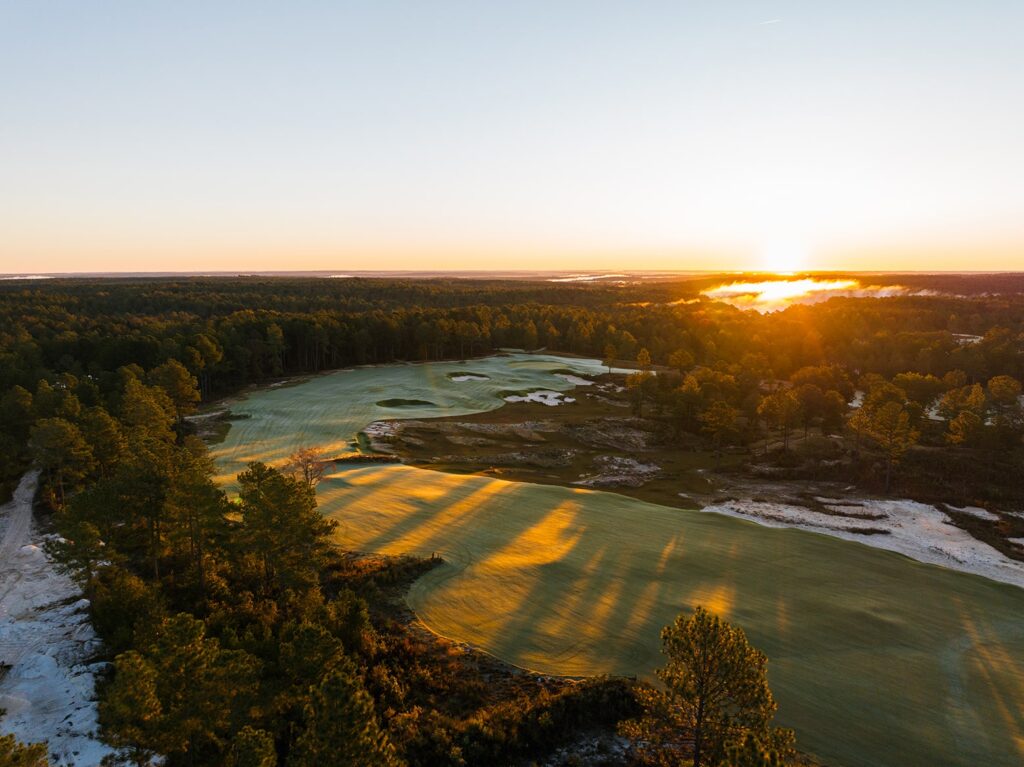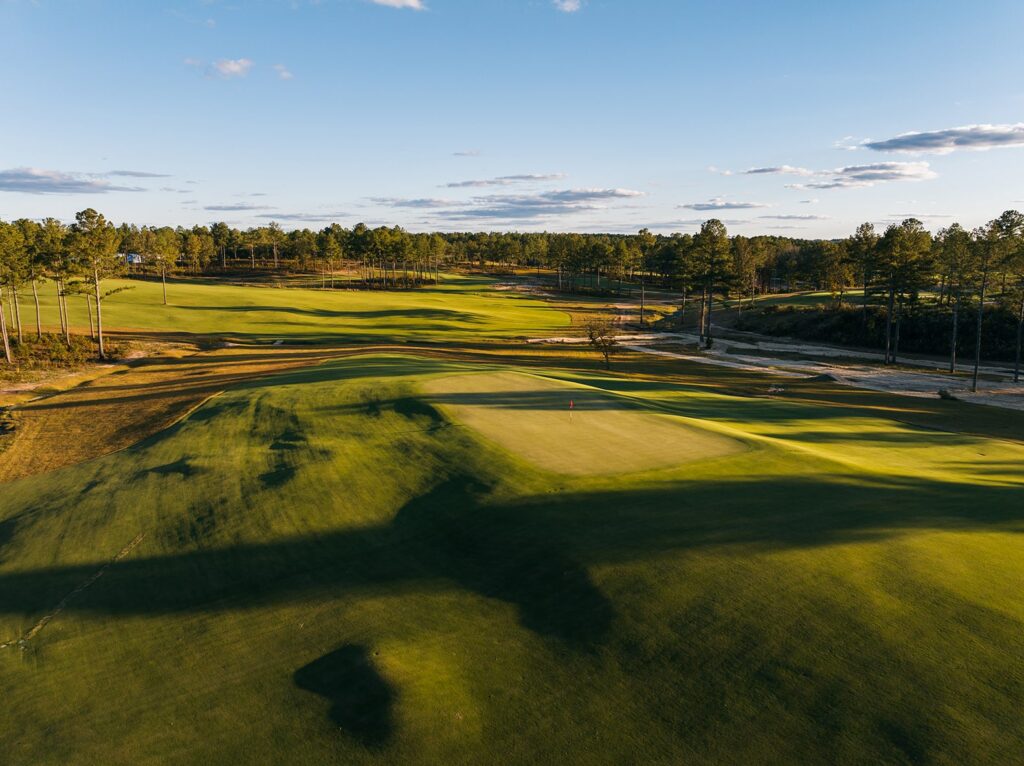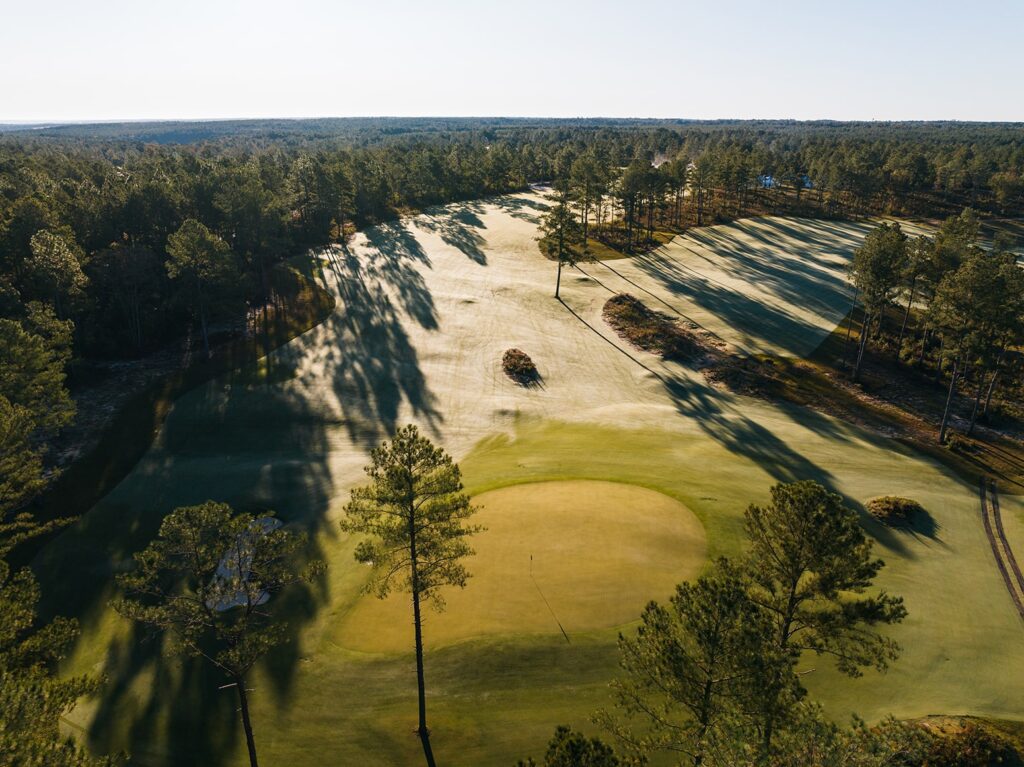PROJECT DETAILS
Facility:
The Tree Farm
Date:
Opened Spring 2023
Location:
Aiken, South Carolina
Sod Producer:
New Life Turf, Carolina Turf Farms
Fun Facts:
Carved out of an actual tree farm, the golf course is the brainchild of PGA Tour Player Zac Blair
About Project

While most injured athletes might just stay home and recuperate, PGA Tour Player Zac Blair, who was out most of the 2021 and 2022 seasons after shoulder surgery, used his downtime to design and develop a golf course. Blair, who as a child watched his father develop golf courses, inherited the desire to create a club of his own.
The Tree Farm, situated on an 800-acre former tree nursery in Aiken, South Carolina, opened in the spring of 2023. The private course features tree-lined fairways spread over 18 holes with TifEagle greens and Tahoma 31 fairways, tees, and approaches.
PROJECT DETAILS
Facility:
The Tree Farm
Date:
Opened Spring 2023
Location:
Aiken, South Carolina
Sod Producer:
New Life Turf, Carolina Turf Farms
Fun Facts:
Carved out of an actual tree farm, the golf course is the brainchild of PGA Tour Player Zac Blair
Challenges & Solutions
Challenges:
- Peak playing season at The Tree Farm is fall, winter, and spring, (September to June). The course is closed in the summer and is not overseeded. The Tree Farm needed a grass that could stay greener longer and green up earlier, yet provide excellent playability even when dormant.
- The golf course is designed with virtually no rough, similar to nearby Pinehurst. Surfaces are mowed at nearly the same H.O.C. and required a grass that can tolerate low mowing heights.
Solutions:
- The Tree Farm selected cold-tolerant Tahoma 31 Bermuda to create firm, fast, and dense playing conditions even when the grass is dormant. Early spring green-up and later fall dormancy were an added plus.
- Tahoma 31 tolerates low mowing heights. Fairways are mowed at .400. Green surrounds and tees are maintained at .300.
Outcome
Creating a golf course that is fun to play was Blair’s number one priority for The Tree Farm.
“I play enough hard golf courses when I’m out on the road. Everyone’s played those places that just kind of beat your brains in, and you don’t leave super happy and excited to go back. For me, it was about building a place where as soon as people got done, they would want to go right back out to number one,” Blair says.
He was intimately involved in not just the feel of the course, but in the design. Blair collaborated with Architect Tom Doak, who did the routing, and Kye Goalby for the shaping. Golf Course Superintendent Nick Roth selected the grass and grew in the course.
Playability
“We don’t overseed or anything like that,” Blair said. “It’s beautiful in the winter, just playing really firm and fast, and the Tahoma 31 allows you to keep the ball on the ground and putt from all over. We really don’t have any traditional rough on the golf course. So it’s a bunch of short grass around the greens. It’s been really cool to just see the playability of it and how it allows you to have a more lengthy feel, I would say in the winter months when it’s dormant and then, you know, even last fall Nick had it really, really nice and tight and, you can still hit a bunch of those shots on the ground and putt from around the greens. That was really important to me. And it seemed like one of the characteristics of the grass was just being able to keep it low and keep it short. It’s awesome.”
Roth agrees. “Yeah, playability is incredible on the Tahoma 31,” Roth says. “The membership and our staff have been extremely pleased. Being a course that does not overseed at all in the wintertime, that’s the time of year that our members are playing out here. And the playability at this time of the year when the Bermuda is not actively growing a lot is great. It’s a really good dormant surface. It stays lush and a full canopy through the whole dormant season, and it provides a really good playing surface. It’s really tight around the greens. Ball roll is great. You can putt from around the greens off the Tahoma, and it’s a really good complement to firm and fast greens.”
Low Water Use
“I believe that Tahoma 31 is extremely drought resistant,” Roth says. “It does a really good job under dry conditions. It’s a really good playing surface, and seems to use water really well. We don’t have to water as much. It provides a really firm, tight surface, and it requires minimal water to do that, and it also is presenting high turf quality at the same time. You don’t see the decline in areas with lack of water, and you also see that surface firm up.”
Aggressive Growth
“I do think that Tahoma 31 is an aggressive grower, and I think that helped us accelerate the grow in a little bit. It seems, talking with other superintendents who have either test plots or range tees with the Tahoma 31, they’ve experienced similar things to where it fills in and becomes denser than a lot of other bermudagrasses. It also is fairly aggressive to keep encroachment out of the greens. And I’d say another plus side of the aggressiveness of the Tahoma 31 is we see great divot recovery out of it. Even in the slower growing season, the growth habit of the Tahoma 31 is extremely upright, opposed to some other bermudas, say, you know, old 419. Tahoma 31 still grows laterally, but out of the divots it really regenerates more upright out of the rhizomes. We see really strong divot recovery even in the shoulder seasons when it’s not growing quite as much. I think it’s a great grass.”
Blair is very happy with the decision to grass his inaugural golf course with Tahoma 31. “It’s just a good grass to play golf off of,” he says. “I played off of it maybe a couple different places before we put it in at The Tree Farm, and it was exactly what we were looking for, just in terms of keeping it tight and being able to let the ball bounce and run and roll. It’s been great.”







